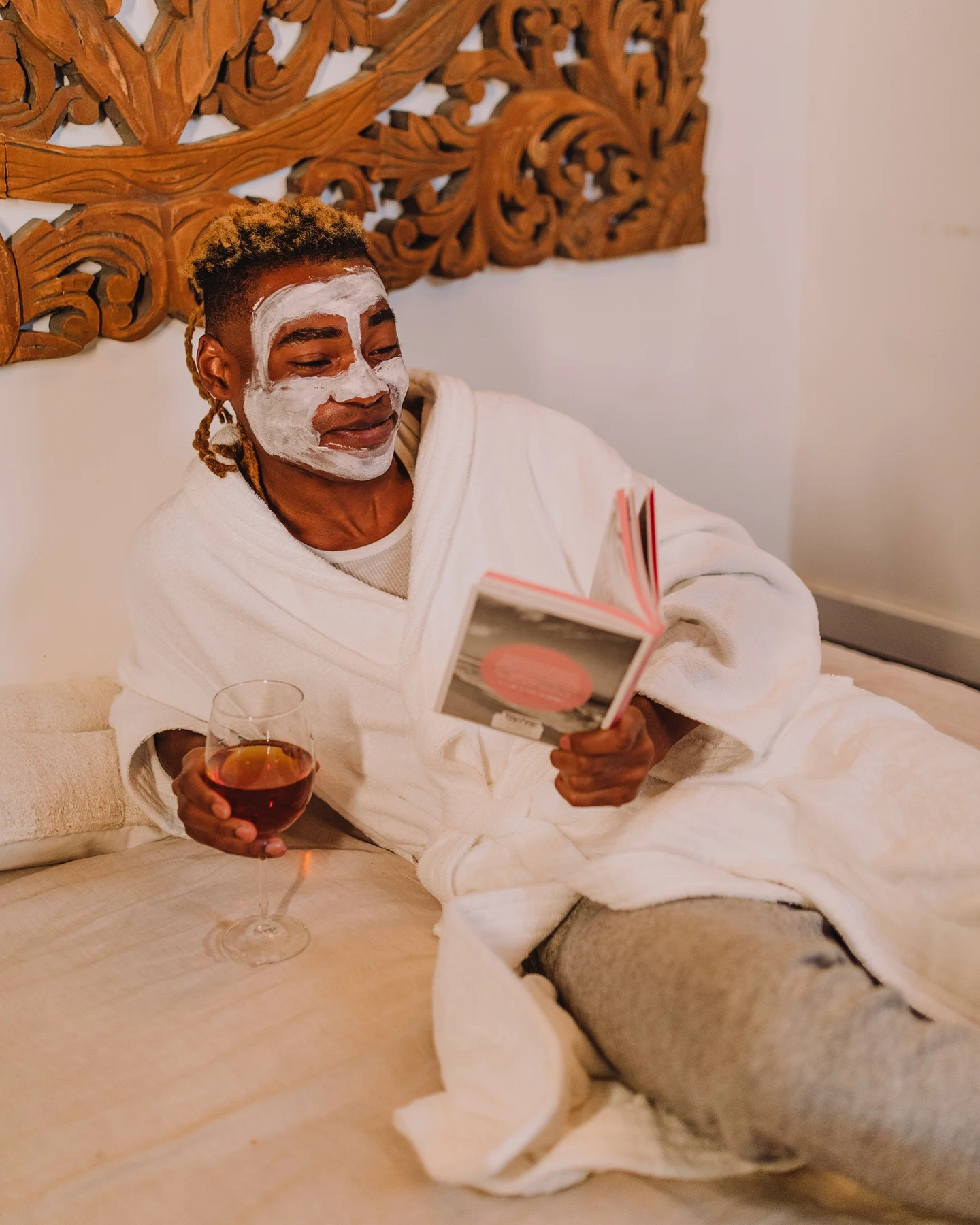All parents want their children to be successful in life — and by that, we mean not only having a good job and earning a good living but also being happy. And all parents wonder how they will accomplish this.
According to Harvard's Center on the Developing Child, it's less about academics and extracurricular activities and more about developing a basic set of abilities that enables people to overcome life's inevitable obstacles. All of these abilities fall under the category of executive function skills, which we utilize to regulate our behaviour. The majority of successful and happy people possess good executive function abilities.
What are the five most critical core skills?
ability to create and carry out concrete goals and plans.
Concentration is the capacity to concentrate on what is critical at any particular time.
Self-control entails exerting control over our responses to not only our emotions but also stressful situations.
Not only do we observe the people and things around us, but we also understand our place in them.
Flexibility is defined as the capacity to adjust to changing circumstances.
While these are abilities that children (and adults) can and do acquire throughout their lives, two critical stages are early childhood (ages 3 to 5) and adolescence/early adulthood (ages 13 to 26). During these windows of opportunity, children can benefit from learning and using these abilities. We'll discuss the second stage of adolescence in this post.
The most effective approach to acquiring any ability is to practice it. Here are some ideas for parents who aren't sure how to help and when to step aside.
Planning
When children are small, parents and caregivers naturally make plans for them. However, as children mature into adolescents, they must learn to do it on their own.
Take care not to micromanage your teen's life. Rather than that, establish some ground rules – simple ones like homework must be completed, kids require seven to eight hours of sleep per night, and regular exercise is critical. You may have additional ground rules, such as the requirement to attend family dinners or religious ceremonies. Then delegate the task to your teen. Intervene only if it is evident that ground rules are being persistently broken.
When teenagers have long-term projects, such as research or college applications, sit down with them and discuss how they intend to complete them. Allow them to generate ideas before you do!
Engage your teenagers in the planning of family activities and trips, as well as home renovations and other initiatives. Allow them to make some decisions (even if you may not always agree with them).
Awareness
Teenagers can be extremely self-aware, but primarily of their own world. Assist them in developing the ability to see beyond it.
Discuss current events and news articles. Discuss how things influence people and how different people may perceive them differently.
Take your teen on adventures—even a simple walk in the woods or a visit to a nearby town can provide them with the opportunity to look around and notice things they might otherwise overlook.
As a family, participate in community service events; demonstrate to them how they can make a difference.
Establish family rituals for checking in, such as over dinner. Allow everyone to share their day.
Anger management: Before responding, try these four steps.
According to the Merriam-Webster dictionary, seeing red means being enthusiastic or emotionally fired up with fury.
Some synonyms for seeing red are: seething, boiling, sizzling, burning, fuming, raging, rankling.
Count to ten. Take a stroll. These techniques have long been recommended to help you pause and reconsider your reaction when you're seeing red and an inch from exploding. Under normal conditions—perhaps a little stress at home or at work—those tactics can be beneficial. However, you may discover that they are less effective in the pressure cooker in which we have been living since the pandemic began. What can you do to keep from hitting your breaking point?
I sought advice from psychologist Stuart Ablon, founder and director of Think: Kids in the psychiatric department of Harvard-affiliated Massachusetts General Hospital. Ablon specializes in defusing explosive behavior in children and adolescents who have substantial developmental deficits in problem-solving, adaptability, and frustration tolerance, the abilities that keep us from melting down.
Pandemic stress impairs our ability to cope.
According to Ablon, many adults are currently grappling with a lack of these skills—not because we haven't developed them, but because pandemic stress is impeding their development. When we are continuously stressed, we lose access to the area of our brain that performs skills like flexibility and tolerance, "explains Ablon.
Blocked skills can lower our coping abilities to those of infants who shout when they don't get their way.
Empathy should be practiced.
When you're angry or agitated, Ablon thinks it's critical to stay calm and "regulated" so you can access the abilities needed to maintain control. And, according to Ablon, the best way to stay calm is to practice empathy—trying to sense another person's perspective or point of view.
Empathy is our most potent human regulator. It has been shown to de-escalate people in the most difficult prison environments, and it can also work on an airline or in line at Starbucks.
How does empathy benefit you?
It's fantastic to be able to calm others, but how can being sympathetic keep you from exploding? It has a cascading impact.
Attempting to understand someone else's point of view may cause you to reconsider how you wish to respond. It will also provide you with something important to do, which will keep you focused and relaxed.
Being calm allows you to access coping abilities such as problem-solving, flexibility, and frustration tolerance.
Using your coping skills improves your capacity to remain calm.
Because you're peaceful, you'll prevent someone else from erupting, which will help you stay calm.

Hip hop jewellery first acquired popularity in the late 1970s and early 1980s, thanks to the rappers of the time. Big, heavy Cuban link chains were a common piece of hip-hop jewellery worn by these artists to signal their presence. Each piece of jewellery they wore was a symbol of their achievements and accomplishments. A stunning selection of gold Cuban link chains can be found in our stylish assortment of Cuban link chains for men and women. Cuban link chains are a sign of wealth. A single chain can take up to 12 hours to make and requires the expertise of more than five experienced jewellers.
We all enjoy pampering ourselves at home with skin care. While going to the spa is a luxury to look forward to on special occasions, taking care of your skin at home is more convenient, and less expensive, and you have more control over the products and treatments you use. Ideas for pampering yourself from the comfort of your own home can be especially enticing today that many people still work from home, as you can work or take care of family chores while taking care of yourself.
Such face and body treatments have a long list of verified advantages. Self-care treatments have been shown to lower blood pressure, relieve muscle tension, improve mood, cleanse, and relieve stress, to name a few health benefits. While many daily behaviors, such as food choices, exercise, and weight management, can affect these health indicators, simple routines performed in the comfort of your own home are an easy and practical method to improve your well-being. Here are five common household items that can be used to make easy cosmetic products and treatments.
Essential oils
Do you enjoy the aroma of spa treatments? The scents of lavender and eucalyptus, which are frequently used in spa treatments, are considered to be relaxing. Essential oils can be used to generate the same relaxing experience at home as part of a spa day. In my experience, applying essential oils to a moist cloth or tiny towel, which may subsequently be utilized in a variety of ways, is one of the greatest ways to accomplish this effect. Fill a bowl with ice water, add your favorite essential oil, dampen a cloth, and squeeze away the excess water. Form a tight rollout of a napkin or towel and store it in an airtight container. Simply take it out of the fridge and apply it on your face for a few minutes or wipe your hands when you're ready for your spa treatment. If you like, you may warm the rolls in the microwave for a minute to make them more delightful on a cold winter day.
There are so many essential oils to choose from that there is something for everyone! To unwind before bed, use lavender oil as part of your evening ritual. Use peppermint or spearmint oil to help you wake up in the morning, or a combination of eucalyptus, lemon, and lavender oils on your towel to produce a perfume that reminds you of your favorite spa.
Turmeric Powder
How to make a Turmeric face mask?
Perhaps you're familiar with turmeric as the spice that gives curry sauce its distinctive yellow hue, or you've seen fresh turmeric root on the grocery store shelf next to ginger. Although turmeric has been used in medicine and food for many decades around the world, its popularity has grown in recent years as the health advantages and uses of this plant have become better known. Curcumin, a substance found in turmeric, is responsible for many of the spice's health benefits. Turmeric's antioxidant and anti-inflammatory properties are two of the most important health advantages, which is why turmeric pills are so popular. While turmeric can enhance the flavor, color, and health benefits of food, it can also be used as a spice.
Turmeric can help lighten dark circles beneath the eyes when used in DIY beauty products. Low fluid intake, lack of sleep, and even heredity can all contribute to dark circles. While it's vital to think about lifestyle factors that can cause dark circles, such as dehydration and lack of sleep, a turmeric-based eye mask can assist in the meantime. To make a paste, combine one tablespoon of ground turmeric with one tablespoon of buttermilk and mix it into a paste. Apply the paste beneath the eyes gently and leave for 15 minutes. To gently remove the paste, dampen a towel with warm water. Turmeric stains, so keep that in mind.
Coconut oil
A hair mask is an excellent technique to hydrate your hair and make it smoother and less frizzy. It can even be used to treat dandruff and soothe a dry scalp. There are a variety of components that can be beneficial in a hair mask, but the most common one is oil. Many oils, such as olive and avocado oil, can help improve the quality and appearance of hair, but coconut oil is thought to be the most beneficial.
Coconut oil is a good base for hair masks, according to hair experts, and it helps hair look healthier, thicker, and longer. Coconut oil is also said to have a calming impact on hair cuticles, nourishes the scalp, and smooth split ends, according to experts. Coconut oil can be used in a variety of ways to boost hair health. To boost the healing properties of liquid coconut oil, simply apply it to your hair and let it on for 30 minutes or overnight. A moisturizing mask can also be made by combining coconut oil (approximately two teaspoons) with honey and an egg. Whatever mask you choose, make sure to massage it gently from the roots to the ends of your hair. Please keep in mind that you may need to shampoo twice to thoroughly eliminate the oil from your hair after removing the mask, but the moisturizing effect will stay.
1 comment
Subscribe to:
Posts (Atom)
No content on this site, regardless of date, should be used to replace direct medical advice from your doctor or another trained practitioner.




